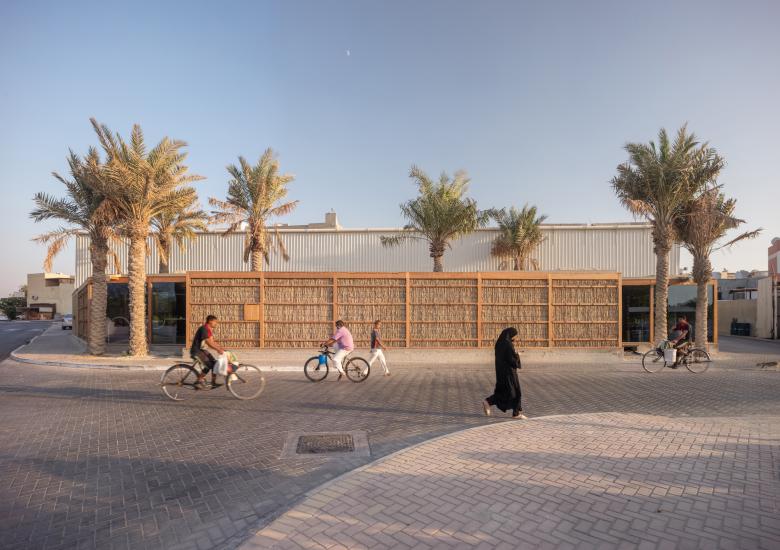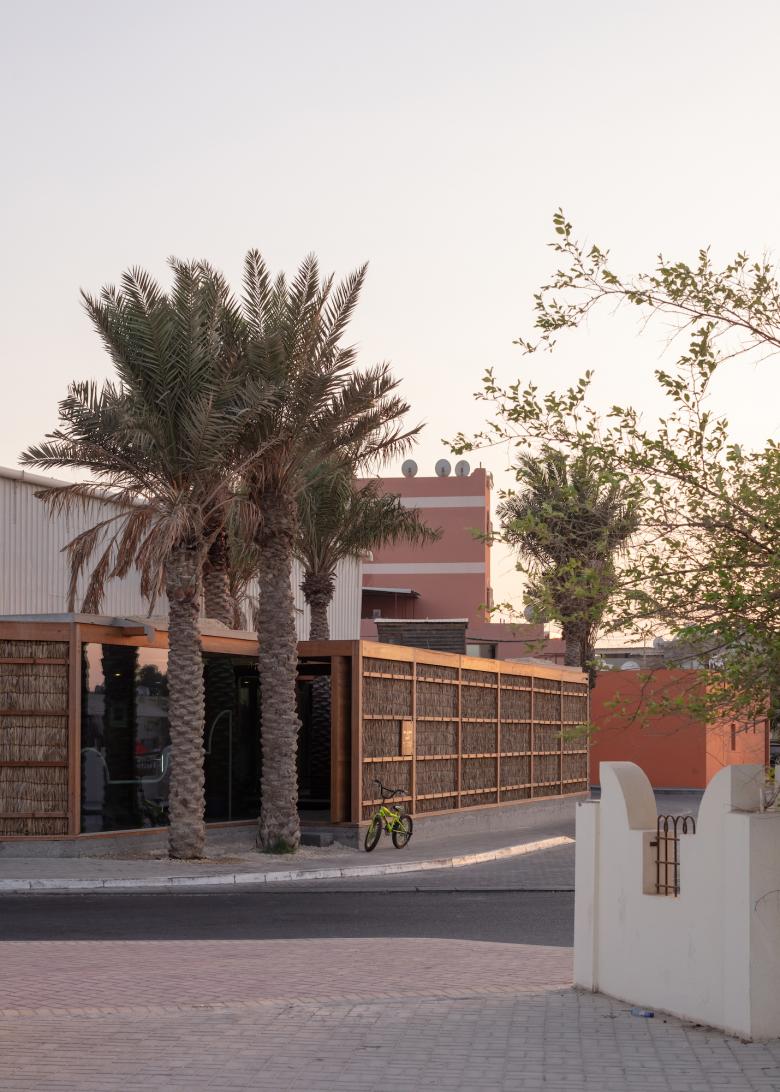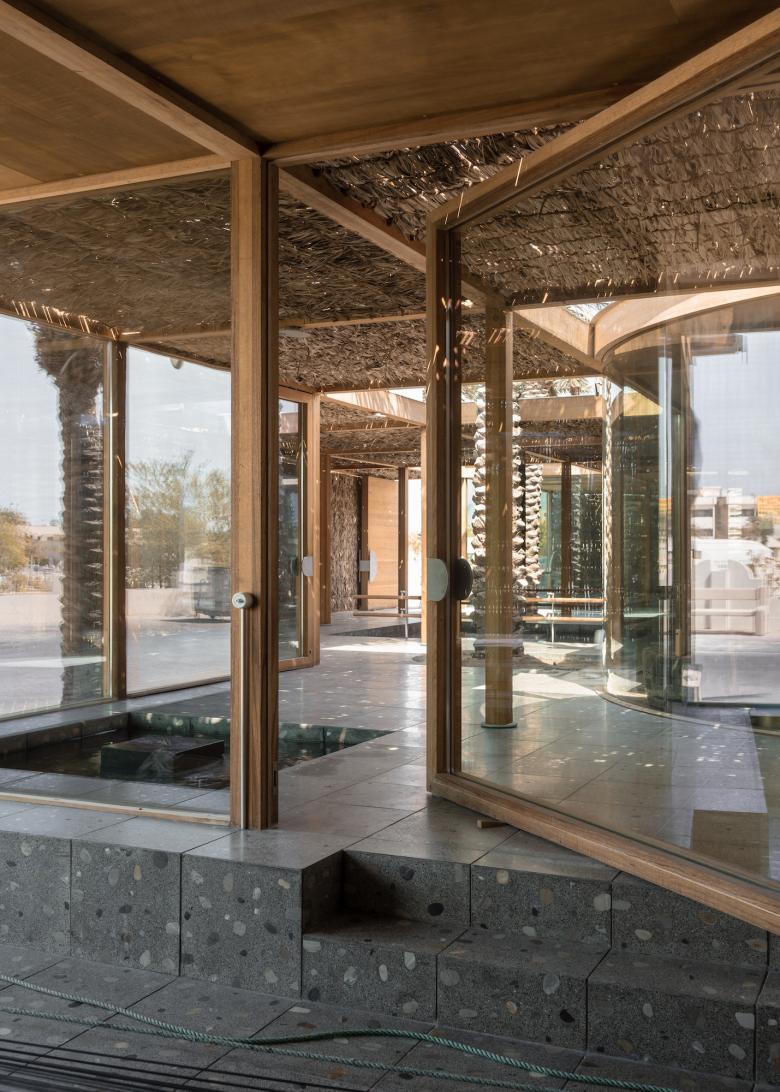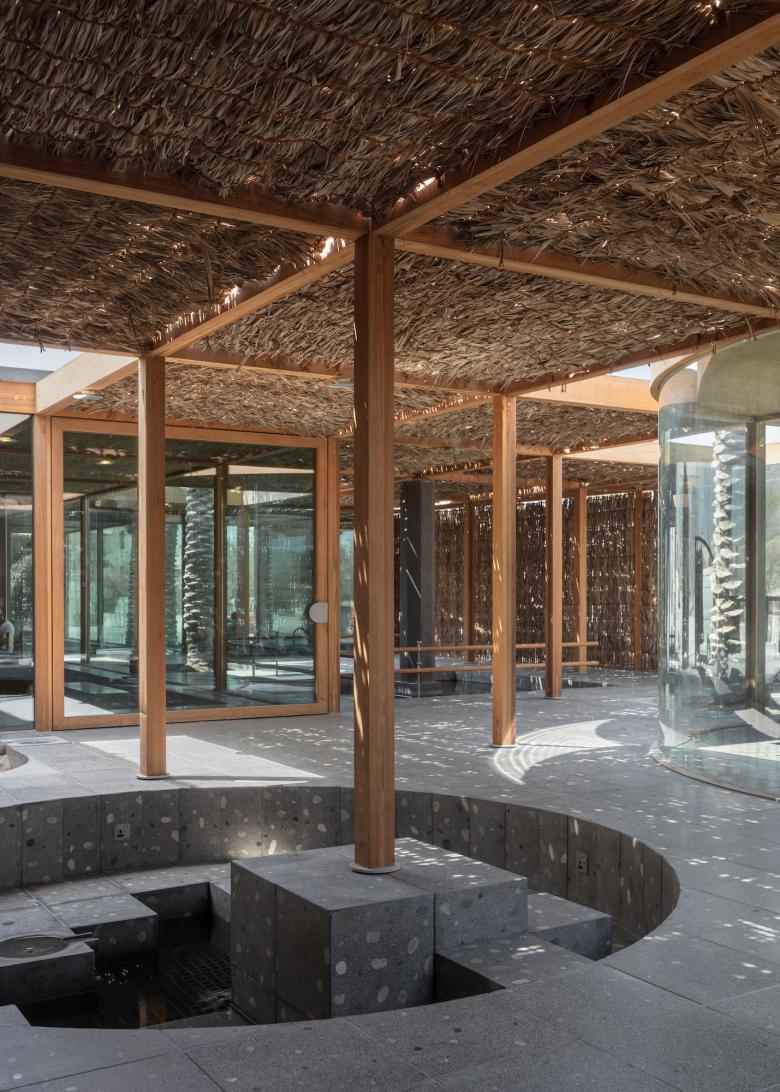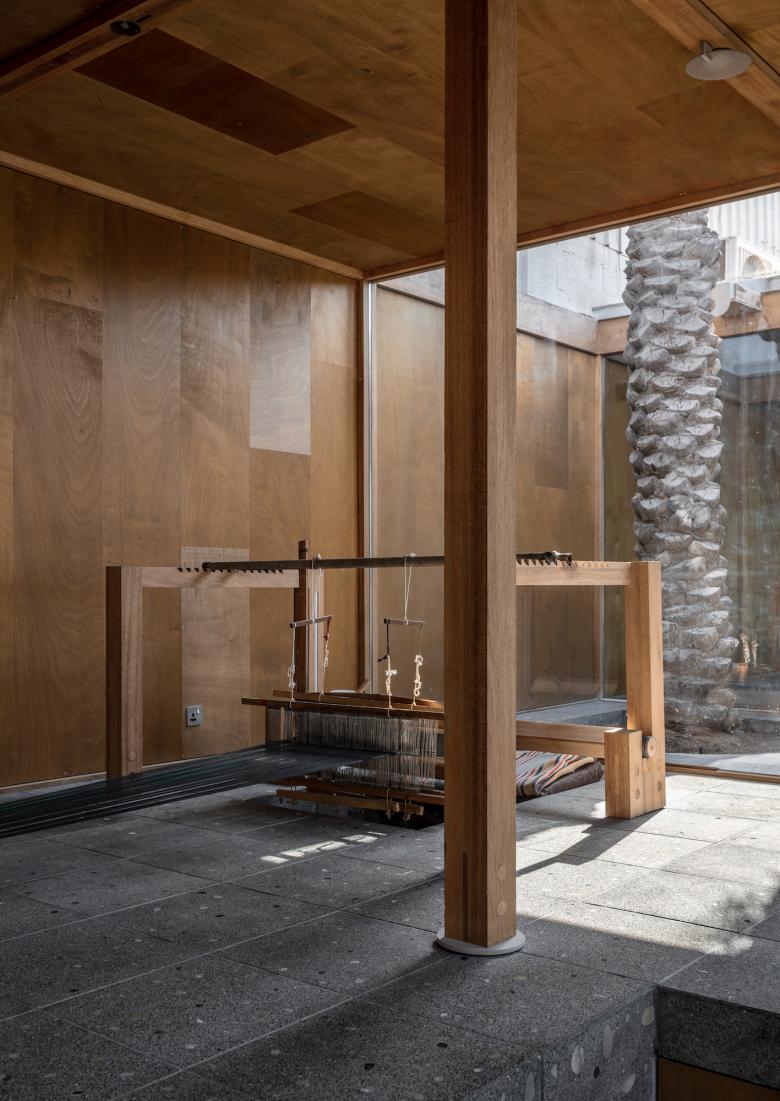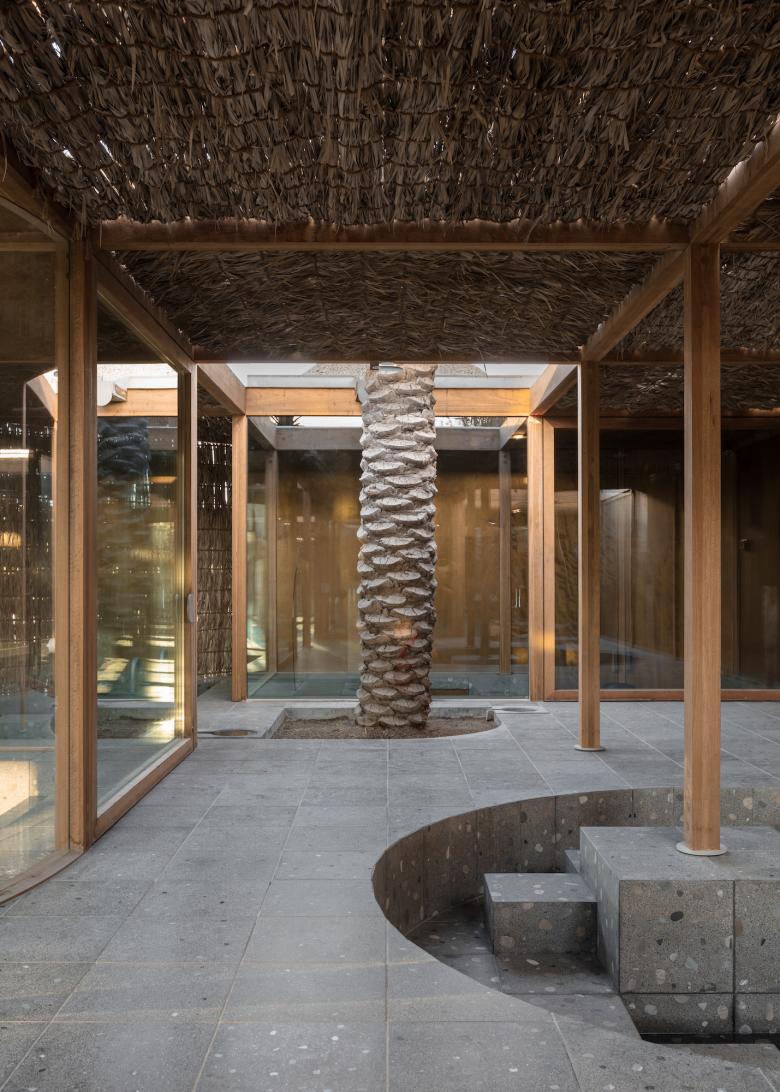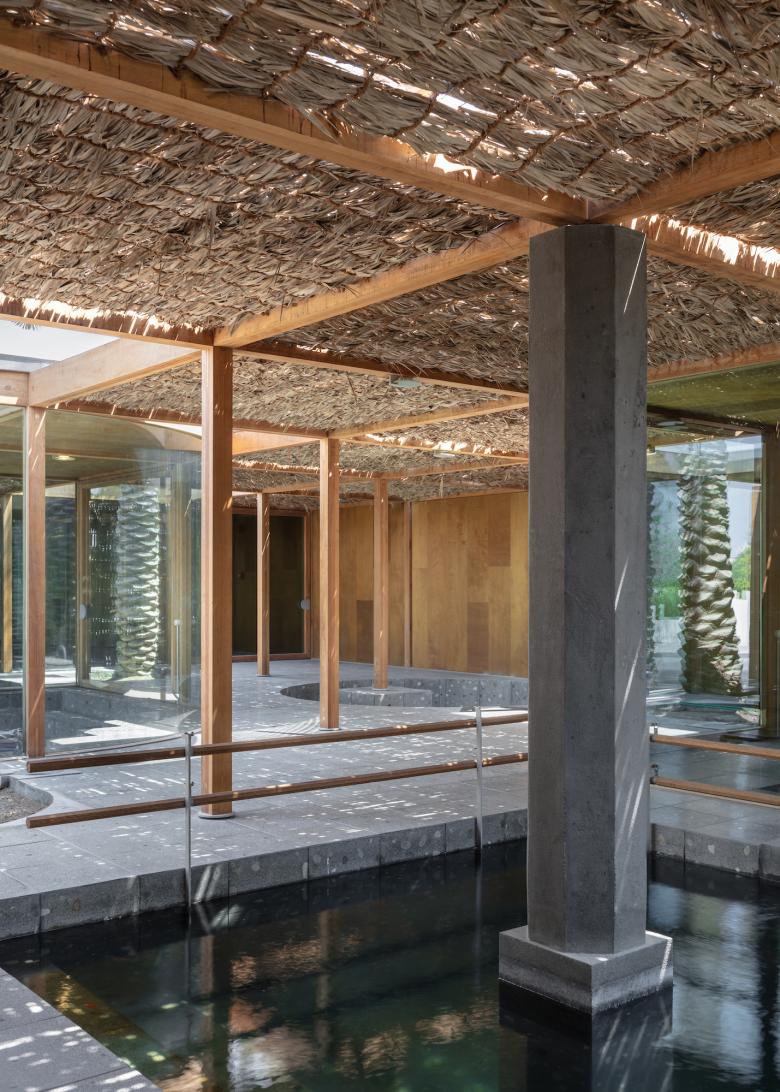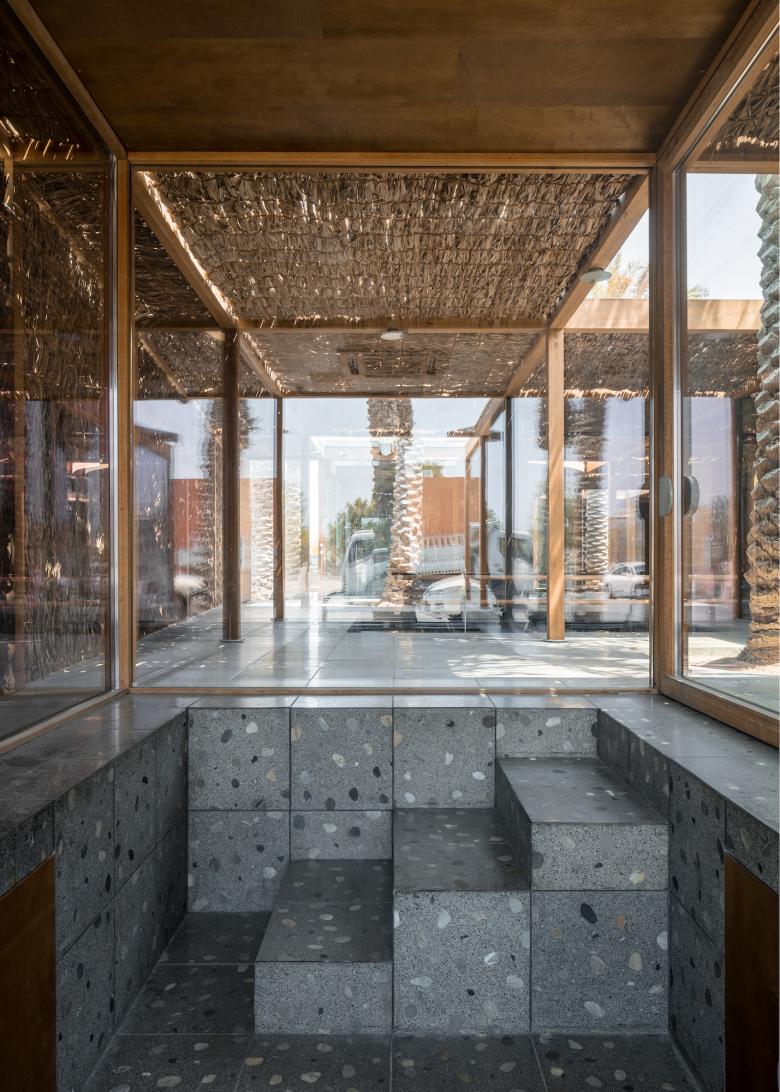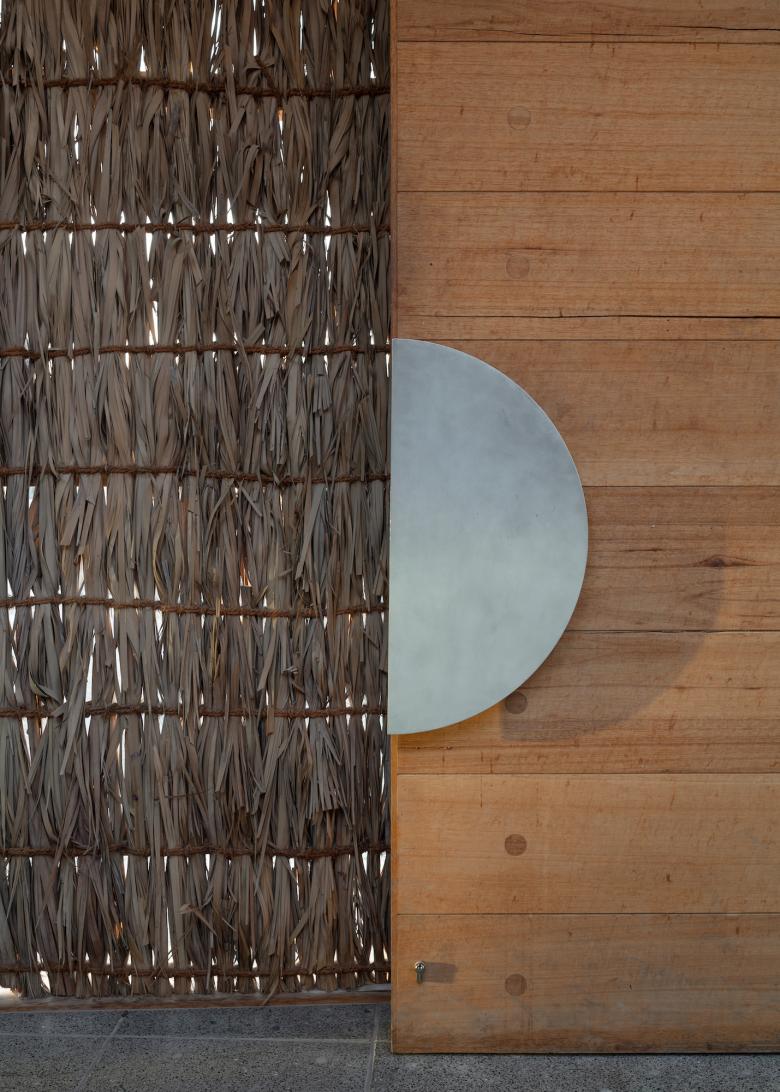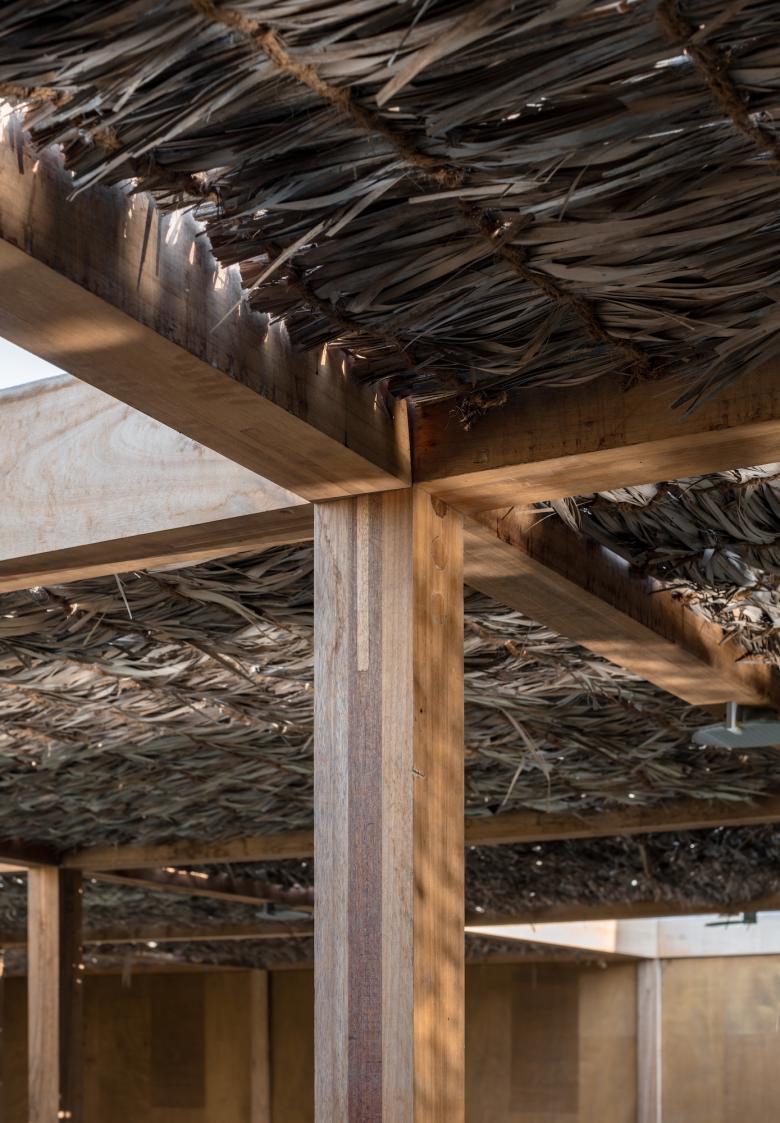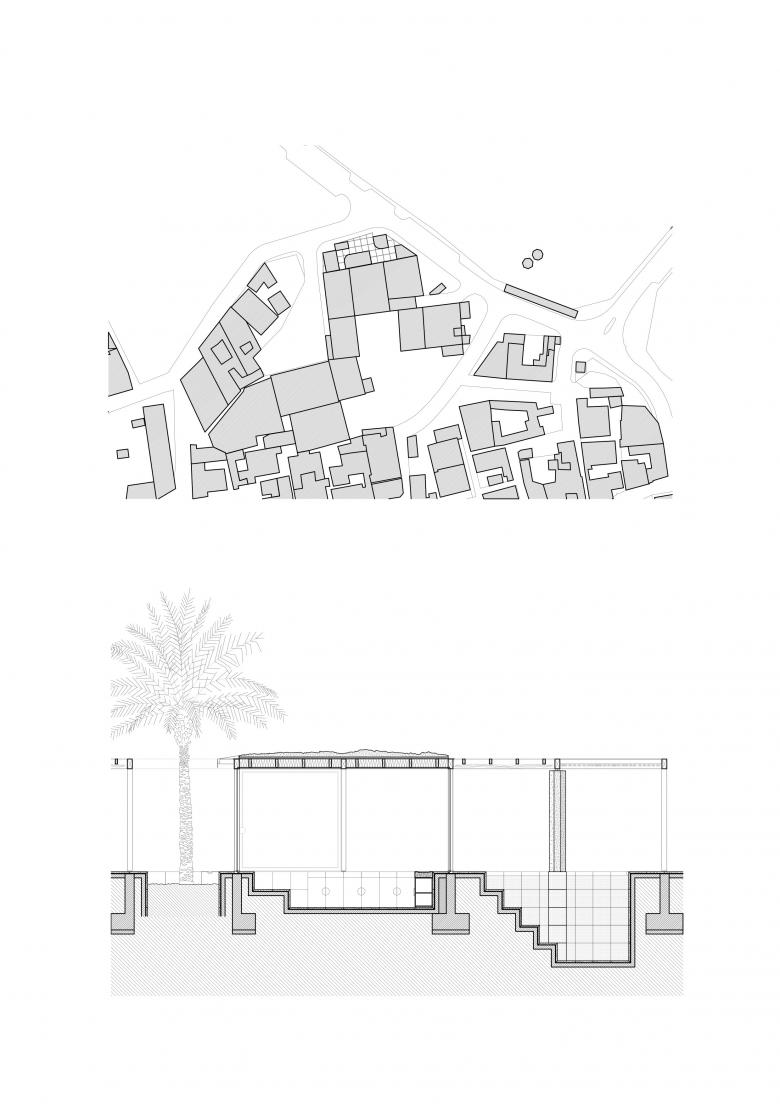Al Naseej Textile Factory
Shaded by a light Arish structure, Bahraini weavers used to dig a hole in the ground to fit their legs. By this simple action, the ground was transformed into an endless table to tense the wires needed for their delicate work. Arish is a traditional building technique using the dry leaves of the date palms and weaving them into strong surface. As such, both the textile and the architecture protecting the artisans were weaved onsite.
Location: Bani Jamrah, Bahrain
Architect: Leopold Banchini Architects
Al Naseej Factory is a textile weaving facility and social space for the local craftspeople of Bani Jamrah. It is a component of a broader effort by the Bahrain Authority for Culture and Antiquities aimed at redefining and reinvigorating traditional crafts and industries across Bahrain.
A tight grid of timber columns and beams is applied to the site as both an organizing principle and reference to the date palm plantations of the north of the island irrigated by a complex network of water channels. The resulting building is a low and quiet gridded street elevation stretching the entire boundary of the site. Only the palm trees pierce through the horizontal ceiling and become the expression of the building.
Internally however, the structure gains figuration derived from the below grade pits in which the weavers sit while operating the timber loom. To this end, spaces for both the production of tapestries and weavings as well as social exchange are defined through a series of precise excavations below the finished floor level of the building. Date palms, ponds and fountains are placed throughout the interior of the project to further break down the rigidity of the gridded structure. The structure is both a garden and a building, open yet protected. Specific functions enclosed solely by glass panels dissolve in the shaded garden.
Composed of regionally available materials, the construction of the building relies upon and celebrates local construction and craft traditions. The shaded structure, greenery, water network and seating areas create a naturally refreshing garden for the inhabitants of the village: a weaved architecture.
Articles relacionats
-
-
-
Pearling Site, Museum and Entrance to the Pearling Path
Valerio Olgiati | 15.05.2019 -
